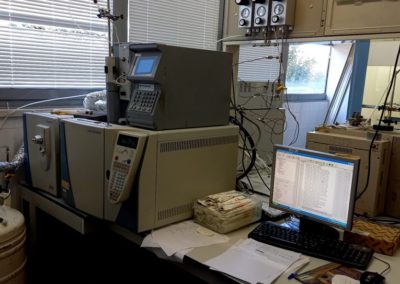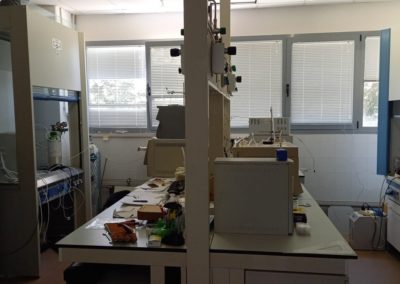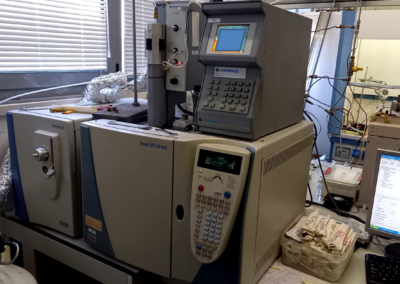The IIA-CNR has a high level of experience in the sampling and analysis of Volatile Organic Compounds (VOC). Over the years, methodologies have been developed for sampling VOCs in emission and in ambient air. Multi-adsorbent traps, systems for sampling and analysis of polymerizing compounds, new adsorbents and passive samplers have been developed.
Currently the VOC laboratory carries out sampling and analysis of VOV in air remoyou, indoors and in industrial emission. Evaluates systems for abatement of VOCs in ambient air and in emission and studies the presence of VOCs also in matrixes other than air such as soils, waters and materials. The most used instrument is the thermodesorber coupled to gas chromatography with mass spectrometry TD / GC / MS using liquid nitrogen both for the cryofocusing of the analytes and for the cooling of the GC oven. In this way, maximum performance is obtained both in terms of chromatographic efficiency (Cryotrap at -180 ° C) and of multi-component separation, retaining the very volatile VOCs (VVOCs) in the separative column with the aid of sub-ambient temperatures while the more heavy up to semi-volatiles (SVOC) are determined by simply raising the temperatures of the GC oven.
For sampling we have Canisters, multilayer thermodesorption traps packed according to analytical needs, adsorbent traps for elution with solvents and passive samplers. Active sampling is performed with a multitude of suction systems ranging from Atex safety pumps for personal sampling to pumps with dilution systems for industrial emissions sampling. Inside the laboratory there are also gas chromatographs interfaced with flame ionization detectors (GC / FID) and with thermo conductivity detectors (GC / TCD). For the analysis of various polar compounds, such as carbonyl compounds (eg Formaldehyde), two dedicated HPLCs are used, equipped with a UV detector and a Fluorescence detector. The laboratory is equipped with systems for the calibration of flows and for the generation of dilute mixtures using certified cylinders and diffusive generation systems.



